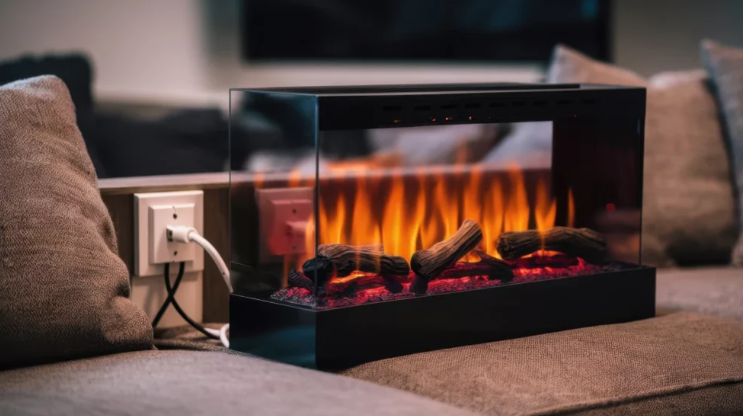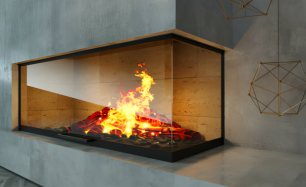The Environmental Impact of Traditional vs. Electric Fireplaces
Fireplaces have long been associated with warmth, comfort, and ambiance. But in today’s climate-conscious world, more homeowners are asking: how eco-friendly is my fireplace? From the crackling of traditional wood-burning hearths to the sleek glow of electric models, each type of fireplace leaves its own environmental footprint.Understanding the differences between traditional and electric fireplaces can help you make a more sustainable choice for your home—without sacrificing charm or coziness.

1. Wood-Burning Fireplaces: Rustic Charm, Higher Emissions
Traditional wood fireplaces are beloved for their aesthetic—there’s something undeniably nostalgic about the sound of logs crackling in an open flame. However, that ambiance comes at a cost.
Environmental downsides include:
Energy inefficiency: Open fireplaces often lose more heat than they produce. Much of the warmth escapes through the chimney, making them less efficient than modern heating systems.
Air pollution: Burning wood releases fine particulate matter (PM2.5), carbon monoxide, and volatile organic compounds (VOCs), all of which contribute to air quality issues and health risks.
Carbon emissions: While wood is a renewable resource, burning it still releases carbon dioxide, and not all wood is harvested sustainably.

2. Gas Fireplaces: Cleaner, But Not Carbon-Free
Gas fireplaces offer a cleaner burn than wood, producing fewer particulates and less air pollution. They’re easier to control and more efficient at heating small spaces.
However, they still come with environmental concerns:
- Fossil fuel dependency: Most gas fireplaces use natural gas or propane, which are non-renewable and emit carbon dioxide during combustion.
- Methane leaks: Methane, a component of natural gas, is a potent greenhouse gas that can escape during transportation and usage.
Gas may be a step up from wood in terms of emissions—but it’s not the greenest choice overall.
3. Electric Fireplaces: The Eco-Conscious Alternative
Electric fireplaces have surged in popularity, especially in urban and eco-conscious households. They don’t rely on combustion at all, which means zero direct emissions from the unit.
Environmental benefits include:
- No air pollutants: No smoke, soot, or indoor air quality concerns.
- High efficiency: Nearly all the electricity used is converted into heat, unlike traditional fireplaces that waste energy through chimneys or vents.
- Renewable potential: When powered by renewable energy sources (like solar or wind), electric fireplaces become a truly sustainable heating option.
Keep in mind:
Electric fireplaces still draw from the grid, so their impact depends on your local energy mix. In regions powered by clean energy, they’re a clear win for the environment.

Final Thoughts
If you’re looking for an eco-friendly fireplace solution, electric models lead the pack. They offer the comfort and aesthetics of traditional options without the environmental drawbacks. While wood-burning fireplaces have their rustic charm and gas provides a cleaner middle ground, both involve emissions and reliance on non-renewable resources.
Choosing an electric fireplace—especially one powered by green energy—is a simple step toward a warmer, more sustainable home. And in today’s world, that kind of warmth matters more than ever.





